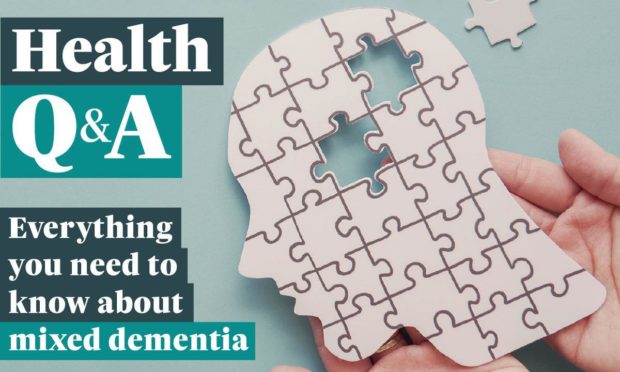Footballing legend Denis Law has revealed a diagnosis of mixed dementia – but what does this mean, and how is the illness linked to the sport?
The 81-year-old former Manchester United player and Scotland international, from Aberdeen, said it was time to tackle the situation “head on” and speak out.
We answer some of the key questions about the condition.
What is mixed dementia?
Dementia is the name for a number of conditions that affect people’s brains, and mixed dementia occurs when someone develops more than one type at the same time.
This is commonly a combination of Alzheimer’s disease and Vascular dementia, or Alzheimer’s disease and Lewy body disease.
Alzheimer’s disease
The Alzheimer’s Society says this is caused by a build-up of faulty proteins in and around the brain, causing parts to shrink and die.
It is the most common cause of dementia and particularly affects the cells that help to form memories.
Vascular dementia
This is caused by problems with the blood supply to the brain, sometimes caused by a stroke or gradual deterioration over time.
It means cells don’t get enough of the oxygen and nutrients needed to work properly – and can cause different symptoms depending on which part of the brain is affected.
These can include slower processing of thoughts, difficulties with problem solving and trouble concentrating.
 Lewy body disease
Lewy body disease
This affects parts of the brain that control movement and the processing of sensory information.
It often leads to disturbed sleep, visual hallucinations and feelings of confusion.
The condition is often mistaken for Alzheimer’s disease, and is caused by protein deposits called Lewy bodies which block messages between brain cells and cause them to die off.
Lewy bodies are also the cause of Parkinson’s disease, which affects movement and can cause shaking and stiffening of joints.
How common is mixed dementia?
According to the Alzheimer’s Association, around three-quarters of dementia cases involve Alzheimer’s.
Lewy body dementia and Vascular dementia both account for 5-10%.
It is thought at least 10% of all people with dementia have more than one type, and it is much more common in older age groups.
Can it be treated?
While there is no cure for mixed dementia, there are medicines and therapies available to help ease symptoms.
Specialists could prescribe drugs to help cells better communicate with each other, or block the effects of certain chemicals in the brain.
The Alzheimer’s Society says reminiscence work – using family photos, music or objects – can help people with memory loss, while physical therapy can assist those with movement difficulties.
Groups set up for patients to make new friends and reminisce over passions and hobbies – including a football-themed get-together at Aberdeen FC – have also seen success in recent years.
Counselling or psychotherapy can also be used to help reduce depression and anxiety for people with dementia.
Is there a link to football?
Several studies have linked repeatedly heading a football with an increased risk of brain injury.
A ground-breaking study from Glasgow University found former professional outfield players were almost four times more likely to die with dementia than members of the general public.
This risk increased to five times for defenders.
While playing position changes the risk factor, the era of playing did not – with consistent results from footballers who played from 1930 right through to the 1990s.
The findings have led to renewed calls for exposure to heading footballs and head impacts in sport to be “reduced, if not eliminated”.

